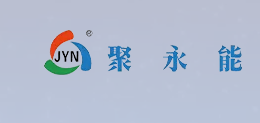Renewable energy technologies are rapidly transforming global energy systems, offering sustainable alternatives to fossil fuels. A crucial aspect of these technologies is the role of printed circuit boards (PCBs) in solar panels, wind turbines, and energy storage systems. The process of PCB plating involves applying conductive materials to the surface of printed circuit boards, essential for electricity conduction and functioning of electronic devices that play pivotal roles in renewable energy solutions.
PCB plating in the context of renewable energy requires specialized expertise due to the unique demands presented by these applications. The materials and techniques used must meet stringent performance standards while ensuring durability and efficiency. For instance, when dealing with solar energy systems, PCBs must withstand exposure to varying environmental conditions, including fluctuations in temperature and humidity. Advanced plating techniques, such as electroless nickel immersion gold (ENIG) or silver plating, are often employed to enhance corrosion resistance and improve the electrical conductivity necessary for reliable operation.
Experience in the field of PCB plating for renewable energy applications is vital. Manufacturers and engineers who have worked on projects involving solar panels, wind turbines, and electric vehicle charging stations bring essential knowledge to the table. They understand that the choice of plating material not only impacts the conductivity and longevity of the PCB but also influences the overall efficiency of the renewable energy system. Quality control and adherence to industry standards are paramount, as subpar plating can lead to failures in performance, cost overruns, and heightened environmental impact.
Authoritativeness in this domain stems from continuous advancements in technology and best practices that enhance the sustainability of PCB manufacturing. Industry leaders are continually researching and implementing innovative solutions that promote eco-friendly processes. This involves selecting plating materials that minimize environmental harm and adopting recycling practices for end-of-life electronic components, aligning with the principles of a circular economy.
In summary, renewable energy PCB plating is a sophisticated process that combines expertise, practical experience, and authoritative knowledge to support the growth of sustainable energy solutions. As the global shift towards renewable energy intensifies, the significance of high-quality PCB plating becomes increasingly clear, playing an integral role in developing reliable and efficient technologies that contribute to a greener future.
